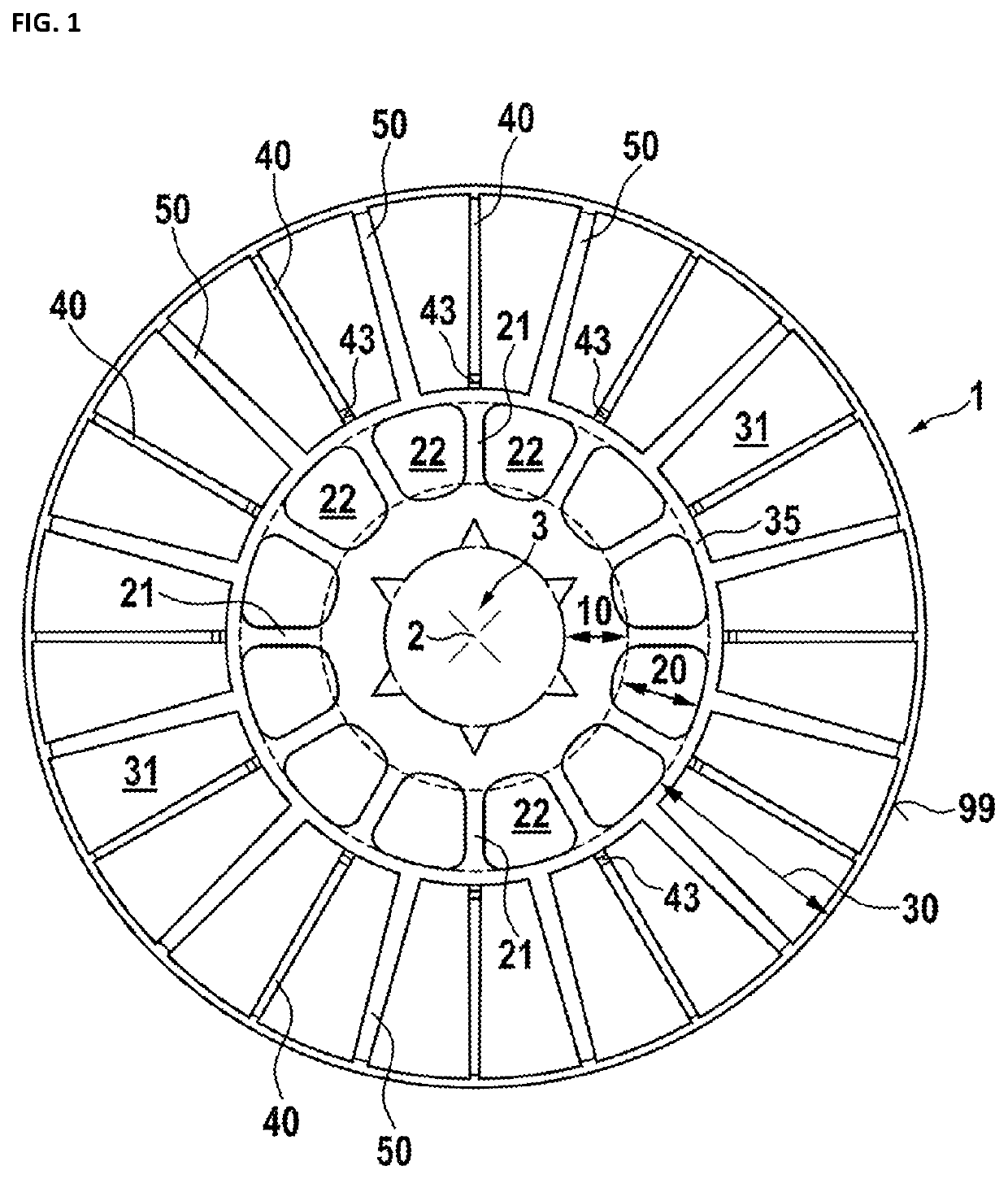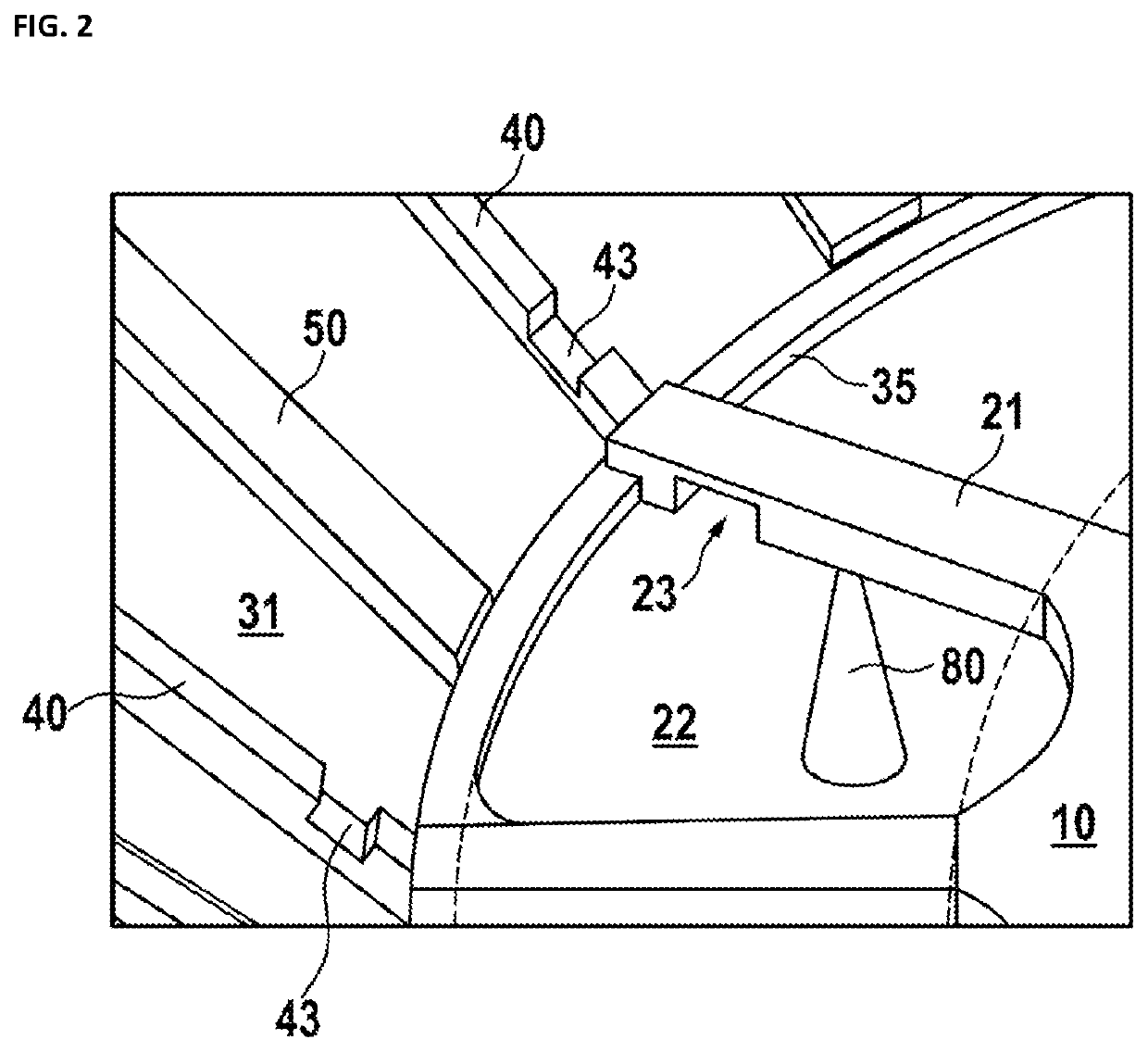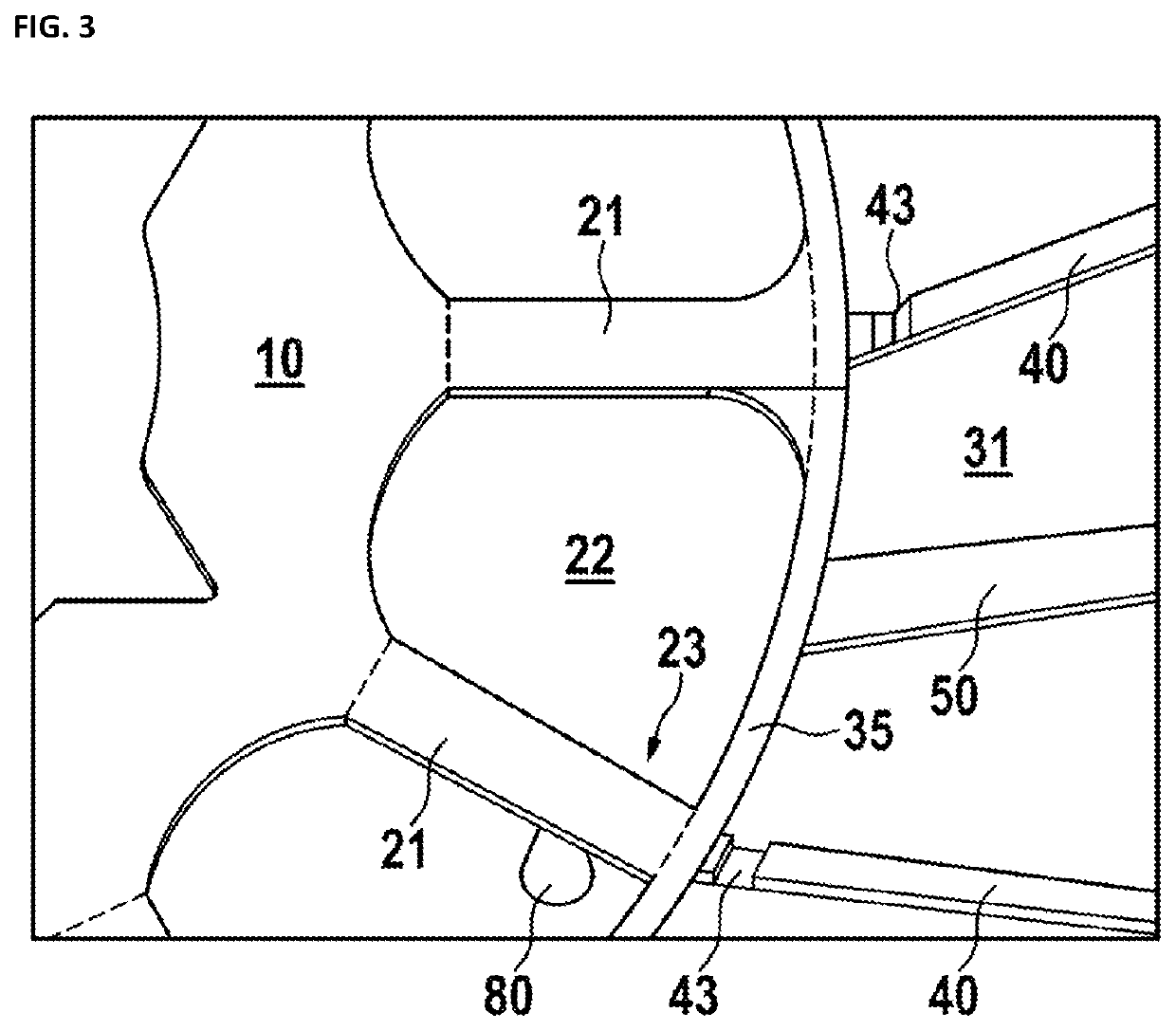Separator plate for an oil mist separator and oil mist separator
a technology of separator plate and oil mist, which is applied in the direction of separation process, machine/engine, mechanical apparatus, etc., can solve the problems of reducing the overall weight of the engine, and reducing the environmental pollution of the piston engin
- Summary
- Abstract
- Description
- Claims
- Application Information
AI Technical Summary
Benefits of technology
Problems solved by technology
Method used
Image
Examples
Embodiment Construction
[0043]FIG. 1 shows a plan view of an embodiment of a separator plate 1. As shown, the separator plate 1 has three ring-shaped areas. The first ring area 10 is limited radially on an inward side by a receptacle 3, dimensioned to accept a drive shaft (not shown). The common axis of rotation of the shaft and the separator plate 1 runs orthogonally to the drawing plane and is identified by the reference sign 2. The first ring area 10 merges radially on the outward side with a second ring area 20, which is essentially formed by preferably spatially-evenly arranged spokes 21 and the openings 22 defined by and located between the immediately-neighboring spokes 21. Such openings 22 define the flow channels for the oil mist. The outer ends of the spokes 21 are at a ring 35 that identifies the inner edge of the third ring area 30. The third ring area 30 extends up to the edge 99 of the separator plate 1, which terminates the outer portion of the plate 1 radially. The limits between the ring a...
PUM
| Property | Measurement | Unit |
|---|---|---|
| height | aaaaa | aaaaa |
| thickness | aaaaa | aaaaa |
| height | aaaaa | aaaaa |
Abstract
Description
Claims
Application Information
 Login to View More
Login to View More - R&D
- Intellectual Property
- Life Sciences
- Materials
- Tech Scout
- Unparalleled Data Quality
- Higher Quality Content
- 60% Fewer Hallucinations
Browse by: Latest US Patents, China's latest patents, Technical Efficacy Thesaurus, Application Domain, Technology Topic, Popular Technical Reports.
© 2025 PatSnap. All rights reserved.Legal|Privacy policy|Modern Slavery Act Transparency Statement|Sitemap|About US| Contact US: help@patsnap.com



